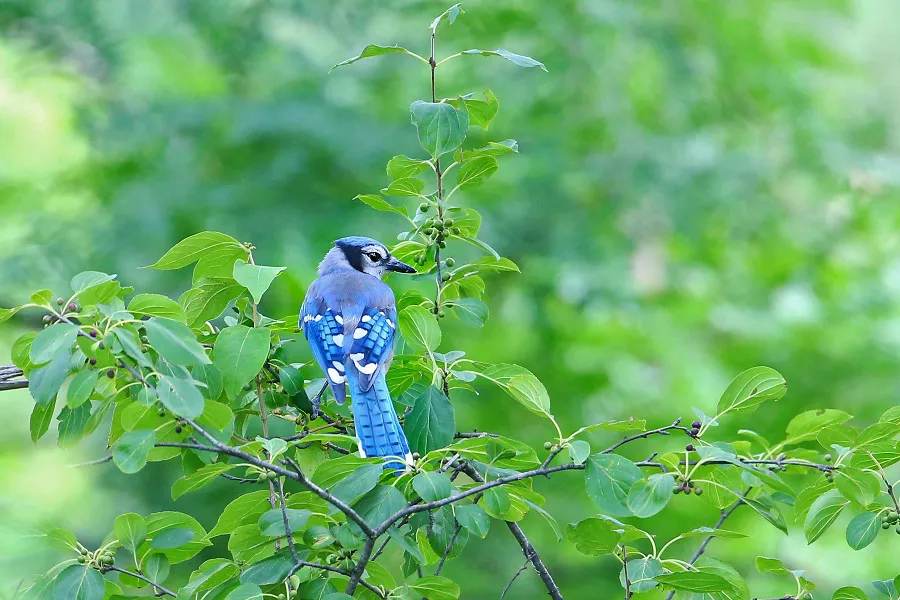Blue jays and hummingbirds are both fascinating creatures that captivate bird enthusiasts worldwide. While blue jays are known for their striking blue plumage and raucous calls, hummingbirds are renowned for their incredible flight capabilities and vibrant colors. However, a persistent question that arises among birdwatchers is whether blue jays prey on hummingbirds. In this article, we delve into the behavior of blue jays and explore the evidence surrounding the controversial topic of blue jays eating hummingbirds.
Understanding Blue Jays
Blue jays (Cyanocitta cristata) belong to the Corvidae family, which includes crows and ravens. They are commonly found in North America and are known for their distinctive blue feathers with white chest markings. Blue jays are omnivorous birds, meaning they have a diverse diet consisting of fruits, nuts, seeds, insects, and occasionally small vertebrates. Their sharp beaks enable them to crack open nuts and consume various types of food.
Blue Jay Behavior and Feeding Habits
Blue jays are highly adaptable birds and can be found in various habitats, including woodlands, parks, and suburban areas. They are opportunistic feeders and take advantage of available food sources throughout the year. Their diet primarily consists of plant matter such as acorns, berries, and grains during the warmer months. In the winter, when food becomes scarce, blue jays resort to consuming insects, eggs, and even small vertebrates like mice or other birds’ nestlings.
Evidence of Blue Jays Eating Hummingbirds
There have been anecdotal reports and observations suggesting that blue jays occasionally prey on hummingbirds. However, it is important to note that direct evidence of blue jays regularly consuming hummingbirds is lacking. The majority of blue jay sightings near hummingbird feeders may simply indicate their interest in the easily accessible nectar or the presence of other insects attracted to the feeders.
Do Blue Jays Eat Hummingbird Eggs?
The first question that most new birders ask on different platforms is whether blue jays eat hummingbird eggs or not.
The answer is, yes. Blue jays are known to raid hummingbird nests in search of the eggs that these birds lay.
Although hummingbirds build their nests in hidden locations, blue jays still find them an easy meal. The parents of a hummingbird nest may be off searching for food, leaving the eggs vulnerable and exposed to predators such as blue jays.
However, it is important to remember that this isn’t always the case. Blue jays are opportunistic predators and may take advantage of an easy meal if they get the opportunity.
Apart from blue jays, most other predators such as cats and hawks will also go after hummingbirds, eggs, and babies.
How Do Hummingbirds Protect Their Nests?
Hummingbirds are known for their small, delicate nests that they construct using various materials such as plant fibers, moss, lichens, and spider silk. While these nests may appear vulnerable, hummingbirds have evolved several strategies to protect them from predators and ensure the safety of their eggs and chicks. Here are some ways hummingbirds protect their nests:
1. Strategic Nest Placement: Hummingbirds choose the location of their nest carefully to minimize the risk of detection by predators. They often select concealed spots in trees or shrubs, near dense foliage or overhanging branches that provide cover and make it difficult for predators to access the nest.
2. Aggressive Behavior: Despite their small size, hummingbirds can be quite territorial and aggressive when it comes to defending their nests. They will actively chase away potential threats, including other birds and animals, by dive-bombing them, flashing their bright colors, and emitting high-pitched warning calls.
3. Camouflage: Hummingbird nests are built with natural materials that blend well with their surroundings, helping them camouflage and avoid detection. The nests often resemble lumps or knots on a branch, making them harder for predators to spot.
4. Stealthy Nesting Behavior: Hummingbirds typically build their nests away from common feeding areas to reduce the likelihood of attracting predators to their nesting sites. They also tend to build their nests during quiet times of the day when there is less activity and reduced chances of being noticed.
5. Nest Defense Calls: Hummingbirds use specific vocalizations to communicate and warn other birds of potential threats. When an intruder approaches the nest, the parent hummingbird may emit alarm calls to alert nearby birds and rally them to help drive away the threat.
6. Mobbing Behavior: If a predator gets too close to a hummingbird’s nest, the parent hummingbird may engage in mobbing behavior. This involves summoning other birds from the area, including non-predatory species, to join in the defense efforts. The combined presence and aggressive behaviors of multiple birds can deter or distract the predator.
It’s important to note that despite these protective measures, hummingbird nests can still be vulnerable to certain predators such as snakes, squirrels, and larger birds. However, by employing these strategies, hummingbirds increase their chances of successfully raising their young and minimizing the risks associated with nesting.
Conclusion
In conclusion, despite occasional reports and observations suggesting that blue jays eat hummingbirds, there is no substantial evidence to support this claim. Blue jays are opportunistic feeders with a versatile diet, but their size and hunting techniques make it unlikely for them to regularly capture and consume hummingbirds.


 Facebook
Facebook  Instagram
Instagram  Youtube
Youtube 